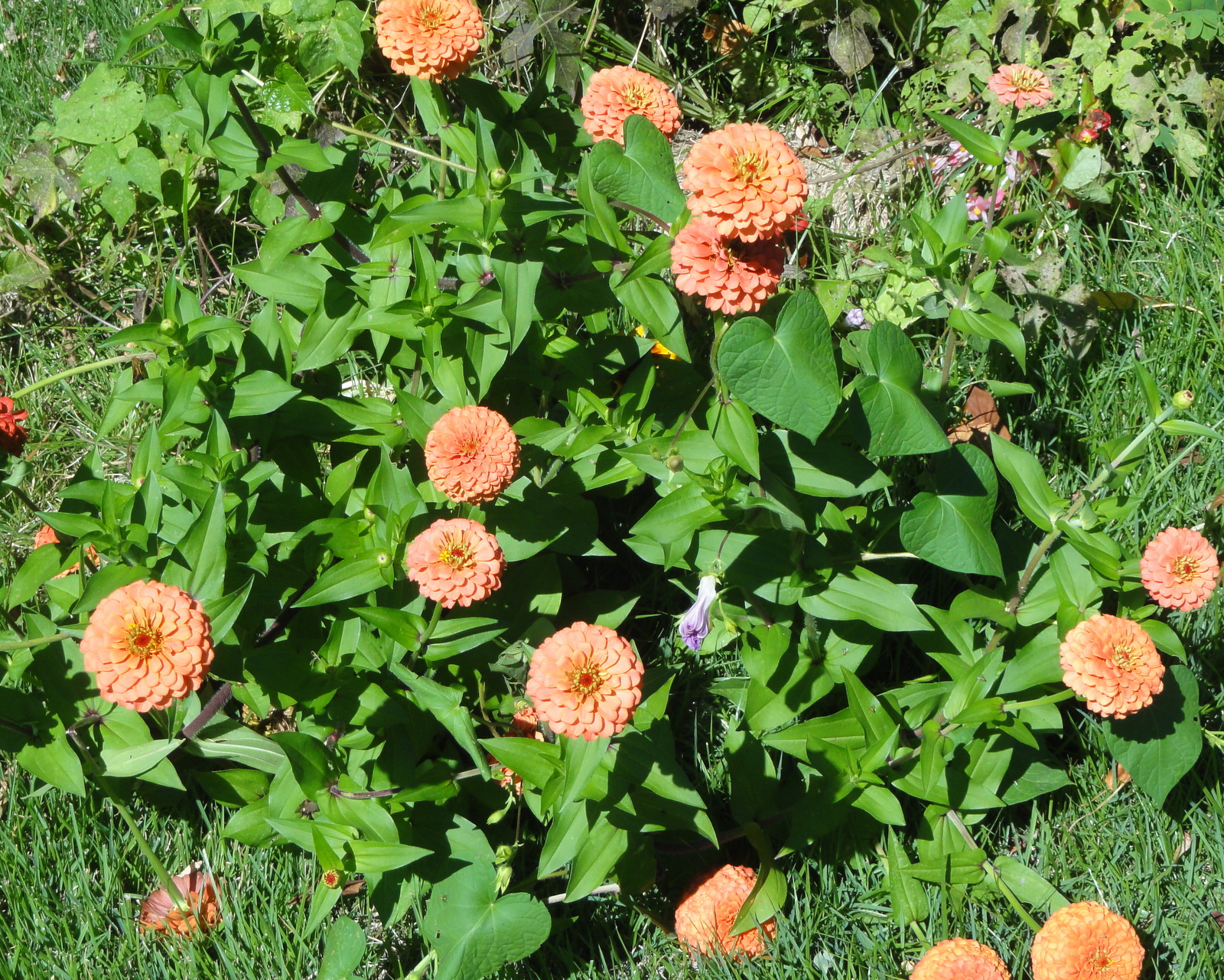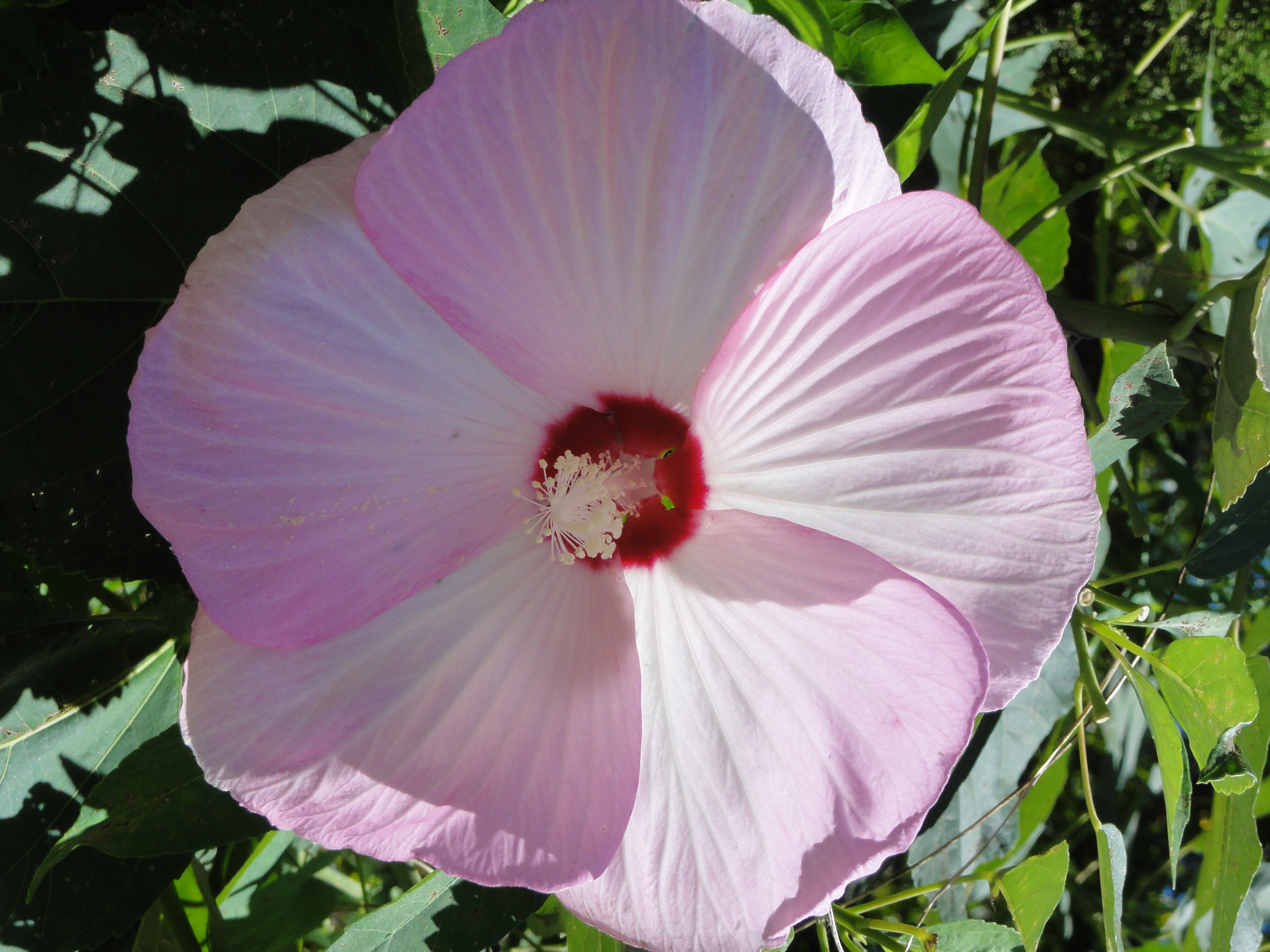Good morning!
We seem to taste the early fall weather after some rain. Especially after our sittings
and service, we have now a quiet, cool, calm, and clear world. Last night I watched
an award-winning film titled The Burmese Harp. The story runs like this:
Private Mizushima played the harp to accompany a Japanese soldier group
fleeing Burma to Thailand, a no war zone, led by Captain Inoue who conducted
their chorus on the way. One night while they were singing Home Sweet Home
in a village, they were surrounded by British soldiers, who instead of raiding
them, joined their chorus. They were told that WWII had ended and so they
surrendered. Mizushima was dispatched to another fighting Japanese group to
tell them the war had ended and that they also should surrender. He was unable
to convince them in the time allotted, and when he tried to request additional
time using an improvised white flag, he was misunderstood by the group, who
had decided to fight to the end, and knocked unconscious by them.
He was the only survivor of the ensuing attack, and he was saved by a monk,
whom he robbed of his robe. He barely reached Mudon, where his group was
detained, saved by that robe (food, shelter, etc.). On the way he saw many
corpses and was determined to stay there to burn and bury them. He found a
red ruby, which villagers, who first simply watched his efforts to bury and then
helped him, told him is spirit. At the funeral procession he carried the Japanese
style white cloth cover of a cinerary urn. Inoue found the ruby in it when he was
taken to the charnel house to remove the urns. His group wanted him to return
to Japan with them and they taught a true parrot to say, “Mizushima, let’s go
back to Japan together.”
Inside the Buddha’s Nirvana statue, Mizushima played the harp to accompany
his group singing The Moon over the Ruined Castle outside. Despite their efforts
to get in he remained, having locked himself inside. With only three days remain-
ing before they were to leave for Japan, they started to sing aloud so that he
might come back to join them. They asked the old sales lady to give him the
parrot they had taught to speak. The day before they were to leave, he showed up
beyond the barbed wire fences and played Auld Lang Syne, whose translation
ends, “Now is the time to part, Good bye!” and he went into the mist despite their
shouts for his return. Inoue received the parrot and a letter written by Mizushima
which, having no time to read before leaving, he read in the boat for the group.
It told his story and decision to remain to put dead soldiers to rest, in peace. The
parrot said, “Alas, Mizushima can not go back with you.”
He was determined to leave his family and country to put those who were killed in
the war into peace. This is like the Buddha Gotama, who left his family, country, and
even the world to put all into peace who are in samsara suffering – birth, aging,
sickness, death, losing, parting from the beloved, meeting the hateful, in short,
the rampant racing of the five aggregates – through the Six Paths of hell beings,
hungry ghosts, fighting devils, human beings, and celestial beings.
Recently I forwarded Christian Appy’s article Our “Merciful” Ending to the “Good
War,” or How Patriotism Means Never Having To Say You’re Sorry to our listserv.
He mentioned the film Dr. Strangelove, the title character being Scientific Adviser to
the President of the U.S. The name seems to suggest his strange love of nukes and
that between the people chosen to survive the nuclear holocaust. Tom Engelhart in
his forward to this article mentioned the Single Integrated Operational Plan to
deliver more than two thousand nuclear warheads to more than a thousand targets
in more than a hundred cities in the Soviet Union, China, and communist countries
to kill more than three hundred million people. This is the “Specialists’ Folly” without
human hearts and minds.
The masses of mankind do the same in their business as usual – promoting
patriotism and wars, growth and devastation, global warming and extreme weather,
nuclear disaster and devastation, mass extinction and annihilation – all man-made
in madness. How can we stop this man-made MAD (Mutually Assured Destruction)
maniacism?
The Buddha said,
Better than conquering thousands upon thousands in the battlefield
Is conquering one-self. This is the true conqueror.
Such conquerors are not conquered by anything and conquer everything, anywhere,
any time. How can one conquer oneself? The Buddha showed us the “come and see”
way, good in the beginning, in the middle, and in the end for all. It is to sit still, still
karmas, see the Dharma of all dharmas, save and serve all beings. Anyone can attain
nirvana, stilling the wind of karmas, unconditioned peace, and bodhi, unsurpassed
awakening in it.
8/23/15
Note:
- The model of Mizushima was later identified as Kazuo Nakamura, who was drafted during his training at Eiheiji in 1938, and who became abbot of Unshoji, Showa-mura, Tone-gun, Gunma-ken after returning from Burma. He wrote the novel The Burmese Earrings under the pen name Kazuo Musha, visiting Burma often and donating for a primary school. He passed away on December 17, 2008 at age 92.
https://ja.wikipedia.org/wiki/%E3%83%93%E3%83%AB%E3%83%9E%E3%81%AE%E7%AB%AA%E7%90%B4
https://en.wikipedia.org/wiki/The_Burmese_Harp_(1956_film)
- Dharma Teaching by Essay ~ Heart Warming Buddhism “One Tan Silk”
Rev. Daigaku Sakai, abbot at Sotoshu Chotoku-ji in Gunma-ken, nephew of Nakamura’s predecessor, noted the story Nakamura told at his temple or the high school he worked for:
When a soldier found a heap of silk bundles in the basement of a Pagoda, donations from the Buddhist followers, where they stayed to avoid the rain for a week, they took many (five, even ten) tans of them to exchange for food in the city where they were headed. I put only one in my backpack. Those who took more silk died one by one on the mountain path to Mudon, a journey of more than a hundred miles. (Tan is a unit of fabric: one tan is about 10 x 1/3 metersf, or enough to make one a person’s kimono clothes.)
Rev. Sakai commented that “desireless contentment,” the first of the Ten Awakened One’s Awarenesses, saved the Nakamura’s life.
http://emuzu-2.cocolog-nifty.com/blog/2010/02/post-d5c5.html
「随筆説法~心があったまる仏教 “一反の絹”
群馬・曹洞宗長徳寺住職 酒井大岳
Mankind’s madness (Triple Poisons) is the cause of MAD maniacism in the karma way and world. The Burmese Harp’s ending caption “The earth of Burma is red; the rocks are also red” seems to suggest blood spilt over the earth hinting also the red ruby, spirit. The Buddha said, “The world is ablaze. The eyes are ablaze. The ears…nose…tongue…body…mind…ablaze.” How can we cease fire engulfing the earth and blood-shedding and tear-shedding, which are more than oceans – as the Buddha said?



